

FORCES FOR GOOD


H. E. HAJIYA LAMI AHMADU FINTIRI
H.E. BARR. CHIOMA UZODINMA
H.E DR AMINA ABUBAKAR BELLO
H.E. DR. LINDA AYADE
H.E. MRS OLUFUNSO AMOSUN
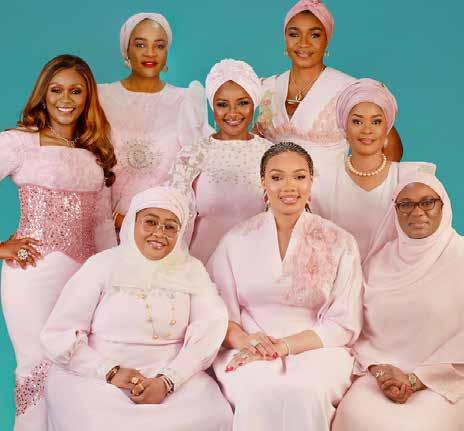
Cancer doesn’t care about geography, status, or politics—but access to care often does. And in
where too many are still diagnosed too late and treated too little, a group of women—current and former First Ladies—are determined to change that reality. First Ladies Against Cancer (FLAC) is a coalition of the spouses of serving and former state governors, united by a shared mission: to improve cancer outcomes for Nigerians through awareness, access, and advocacy.

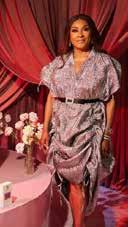

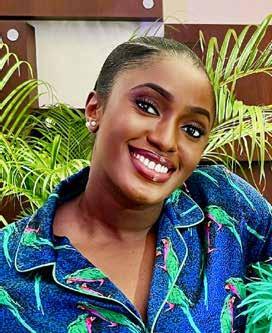
ne of the things I’ve come to believe over time is that true leadership is rarely about how loud your voice is, how many people know your name, or how many titles you hold. It’s about what you do with the access you have. Whether you sit at the head of a boardroom, hold public office, or simply have the ear of the right people, the real question is always: are you using your position to make things better for others?
That question is at the heart of this week’s cover story.
First Ladies Against Cancer (FLAC) is a coalition of present and past First Ladies who have chosen to use their platforms in truly impactful ways— addressing one of the country’s most urgent public health challenges: cancer care. Through sustained advocacy, community outreach, and strategic partnerships, they are working to bridge the gaps in access, detection, and treatment nationwide. It’s not performative. It’s not glamorous. And it’s certainly not easy. But it’s necessary.
What stood out to me as we worked on this feature was the clarity and conviction with which these women operate. They understand the power of visibility and the responsibility that comes with their position. They are choosing to act with intention, consistency, and care. They are directing attention to a crisis that rarely dominates headlines but quietly devastates families. They are insisting that healthcare must be accessible, that lives must be saved, and that their influence must mean something.
This feature isn’t just about FLAC. It’s about what becomes possible when leadership is guided by purpose. It’s a reminder that those in positions of power, formal or informal, have a unique opportunity to drive change, especially when they choose to lead with empathy and action, not ego.
We live in a time when visibility and impact are often blurred. But what FLAC is doing cuts through that noise. It is measured. It is deliberate. And it is deeply human.
As you read their story, I hope it stirs something in you, too. Maybe a desire to support a cause like this. Maybe a reason to look again at the space you occupy, and how you might use it a little more intentionally. Influence isn’t always loud, but it should never be wasted.
While we are on this, take a moment to check in with yourself. What are you standing for? What are you building? What are you giving back?
As always, I’m listening.
Love,




By Aliyah Olowolayemo
Mastering the Art of Too-
Much-But-Just-Enough
The magic of oversized fashion lies in proportion, not just size. It’s about knowing how volume, length, and shape can work together to elevate your look instead of overwhelming it. Think slouchy trousers cinched at the waist and paired with a sharp crop top—perfection. Or an enormous shirt half-tucked into tailored shorts—effortless. A boxy blazer over the tiniest mini skirt? That’s fashion gold. The best oversized outfits strike a delicate balance. Let one piece do the heavy lifting while the rest falls into place. If your trousers are wide and sweeping, keep your top more fitted. If your jacket is tentsized, go sleek down below. The key is to allow one voluminous item to take centre stage, while everything else plays a supportive role in shape and silhouette.
Everyone Needs Just a Little Bit Extra
Global brands like The Row, Balenciaga, and Jacquemus have long embraced the oversized wave, but Nigerian designers aren’t far behind. Orange Culture’s fluid shapes, Emmy Kasbit’s
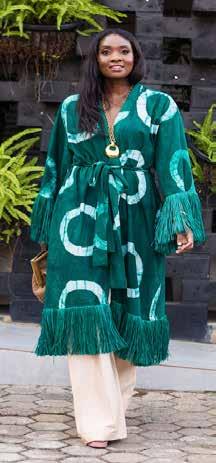
exaggerated tailoring, and Tokyo James’ architectural volumes all prove that oversized can be just as elegant, considered, and refined as anything body-hugging. These designers have mastered the art of silhouette, showing that you don’t need sequins or embroidery to make a statement. Sometimes, the drama is in the cut.
Celebrities Are In On It Too
Celebrities are championing the look as well. Tems has made voluminous, structured pieces her signature, proving that you can be fully covered and still command every room. Burna Boy often leans into oversized silhouettes for his off-duty looks, pairing relaxed tailoring with bold shoes and statement accessories. Even the most tailored stars know there’s something powerful about a little extra fabric.
Comfort is the New Cool
Let’s be real: one of the biggest appeals of oversized fashion is comfort. After years of squeezing into bodycon dresses and stiff denim, the liberating feel of a roomy shirt or wide-leg pants is unmatched. But make no mistake—this isn’t about choosing comfort over style. It’s about merging the two. Oversized dressing is where fashion and function finally meet in the middle.
Big Fits, Big Energy
Oversized chic isn’t just a style trend—it’s a shift in attitude. It speaks to comfort, confidence, and a reimagining of what it means to be stylish. As more Nigerian designers and fashion lovers embrace this silhouette, it’s clear that big fits aren’t going anywhere. Baggy is beautiful. Slouch is style. And if you show up looking like you borrowed your dad’s blazer or your boyfriend’s jeans? Trust us— that’s the look.
There’s a certain ease that comes with stepping out in clothes that don’t cling. It’s freeing. It’s bold. It’s drama. Once dismissed as sloppy or ill-fitting, oversized fashion has now cemented its place on runways, in editorials, and on the streets.
Once upon a time, if your jeans weren’t tight or your jackets weren’t nipped at the waist, people assumed you had no sense of style. But fashion is fickle. Trends change, tides turn—and right now, oversized is the moment. What used to be the opposite of stylish is now the height of it. “Look good, look baggy” might sound like the start of a fashion faux pas, but in 2025, it’s a bona fide style mantra. From exaggerated blazers and balloon trousers to boxy buttondowns, the oversized silhouette has taken hold of Nigerian fashion—and it’s not letting up anytime soon.

OVERSIZED CHIC: BAGGY NEVER LOOKED THIS GOOD

EXECUTIVE EDITOR
Montaigne Place Hosts Exclusive Fragrance Event for the Launch of Eladaria and Creed’s Queen of Silk & Carmina
ADUKE SHITTA BEY
LOLA OGUNNAIKE
LAGOS CANVAS: A Groundbreaking Celebration of African Creativity in Music, Film, Fashion & Art

OAfrobeat Restaurant, located at 1637 EbonyLife Place, Victoria Island, and hosted by Mo Abudu, CEO of EbonyLife Group, and Sir Sadiq Khan, Mayor of London. Together, they
delivered a message of cultural unity, global collaboration, and creative excellence rooted in African expression.
Lagos Canvas was designed to serve as a bridge between Africa’s creative capital and the world, blending the energy of Lagos with a curated showcase of emerging and established talent. Guests were treated to immersive art installations, live musical performances, fashion expressions celebrating contemporary African identity, and rich conversations on the future of storytelling and cultural innovation.
The event was held in partnership with Lagos State, Moët & Chandon, and the Mayor of London, creating a powerful platform for cross-cultural dialogue and investment in Africa’s creative industries.
Lagos Canvas succeeded in cementing its place as a flagship cultural event in Nigeria’s social calendar. Visual highlights, thought-provoking narratives, and compelling guest engagements reaffirmed that Africa isn’t just participating in the global cultural conversation; it’s leading it.



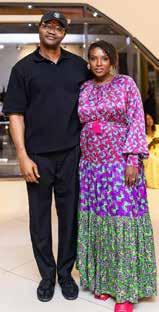
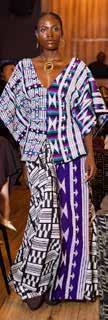

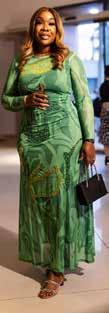
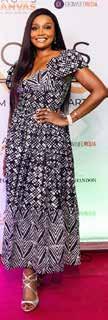
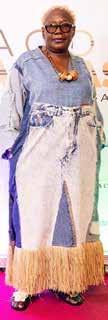
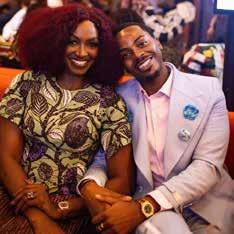
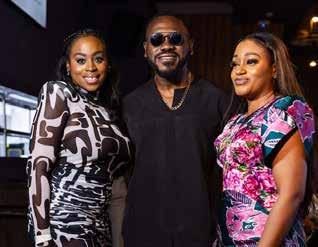
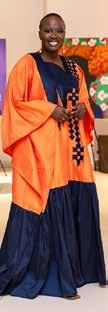

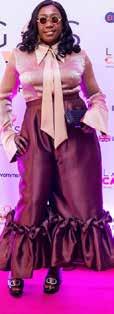
MONTAIGNE PLACE
Hosts Exclusive Fragrance Event for the Launch of Eladaria and Creed’s Queen of Silk & Carmina
Montaigne Place, Nigeria’s leading luxury beauty and fragrance destination, brought together an elegant mix of fragrance lovers, influencers, and tastemakers for an intimate evening celebrating the official launch of Eladaria, alongside an immersive animation of Creed’s Queen of Silk and Carmina.
The experience offered a seamless blend of scent and storytelling, as guests explored the grace and allure of Eladaria, a fragrance that celebrates feminine power and timeless elegance, making its highly anticipated debut in Nigeria.
Adding to the evening’s sensory journey were immersive animations of Queen of Silk and Carmina, two signature fragrances from the iconic House of Creed. Each perfume was brought to life through curated ambience, artistic styling, and tailored scent experiences that echoed Creed’s rich heritage in fine perfumery.
From floral installations to signature fragrance cocktails, every detail was designed to reflect the character and artistry behind each scent. The event underscored Montaigne Place’s continued commitment to elevating the fragrance experience in Nigeria and connecting consumers with the world’s most exclusive perfume houses.
With this unveiling, Montaigne Place reinforces its position as the ultimate destination for luxury scents in Africa.


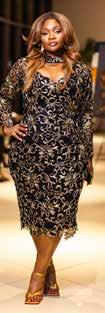





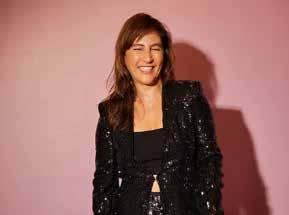
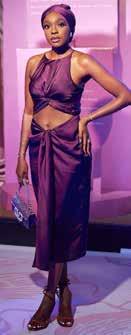
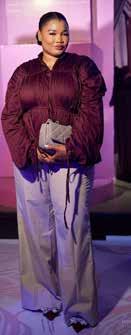


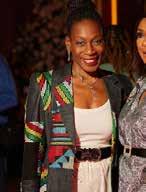
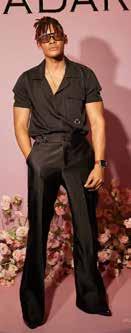
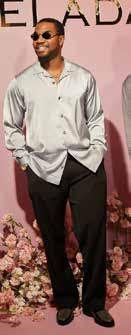


n Tuesday, July 15th, Lagos Canvas, a cultural landmark initiative curated by EbonyLife Media, brought together an exclusive audience of artists, creatives, thought leaders, and dignitaries to celebrate the vibrant spectrum of African creativity across Music, Film, Fashion, and Art.
The high-profile event was held at The
AND TEMIDAYO MAKANJUOLA BUKKY GEORGE TAYLOR
SIR SADIQ KHAN, MO ABUDU JONNY BAXTER
MD - MONTAIGNE PLACE
By Funke Babs-Kufeji
Build on Timeless Essentials
A great wardrobe begins with the right basics. Think: a sharp white shirt, tailored jeans, a classic black blazer, neutral flats, and that perfect little black dress. These staples are eternally stylish and versatile, forming the foundation for countless outfit combinations.
Once you’ve got these essentials covered, mixing and matching becomes not only easy but also budget friendly.
Find Your Perfect Fit
No matter how much you spend, clothes that don’t fit well won’t look flattering. A simple tweak from a tailor can elevate even the most affordable outfit, making it sleek and chic. Learn to understand your body shape and choose silhouettes that enhance your best features.
Accessorize with Purpose
Accessories are the easiest way to breathe life into a simple outfit. A standout earring, a stack of layered necklaces, a bold handbag, or a statement scarf can add immediate flair. You don’t need an entire jewelry box—just a few statement pieces that you rotate thoughtfully and strategically.
Master the Power of Neutrals
Neutral tones like beige, white, black, grey, and olive form the backbone of a functional, stylish wardrobe. They’re effortlessly chic, mix well together, and can be worn in endless combinations. A pop of color can always be added through shoes, makeup, or accessories.
The Thrill of Thrifting Thrift shopping isn’t just a sustainable choice; it’s a stylish one too. Lagos markets, Instagram thrift shops, and vintage pop-ups are filled with hidden gems. With a little patience and a sharp eye, you can discover high-quality and even designer pieces at a fraction of the cost.
Pay Attention to Grooming
Being stylish isn’t just about what you wear. Your grooming habits—clean nails, fresh hairstyles, neat makeup, and well-maintained shoes—can amplify your overall look. Often, these details stand out more than the clothes themselves,
LOOKING GOOD FOR LESS
Looking fashionable doesn’t require a bank account full of zeros or a closet bursting with designer labels. True style is born from knowing what works for you—your body, lifestyle, and personality. It’s all about making intentional choices and wearing them with confidence. And the best part? You don’t need a millionaire’s budget to look like one. With a dash of creativity, smart choices, and a solid fashion sense, you can curate a wardrobe that looks expensive but doesn’t break the bank. Because style is never about how much you spend— it’s about how well you express yourself. And the most important thing you can wear? Confidence. Always.

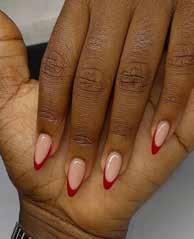
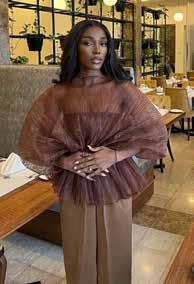
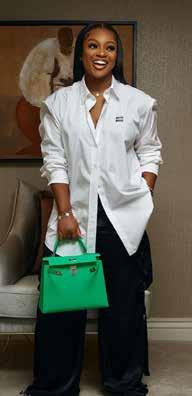
making you appear polished and put together.
Own Your Outfits

There’s absolutely no shame in wearing the same outfit more than once. True style is all about how you wear something, not how new it is. Rewear your favorites with pride, and switch things up with different accessories, layering, or footwear to refresh the look.
Stay Inspired
Seek style inspiration from fashion bloggers, Pinterest boards, or Instagram accounts that align with your body type, aesthetic, or budget. TikTok style reels and outfit inspiration pages are perfect for quick ideas that you can recreate with the pieces you already own.
LACE FRONTS, BRAIDS, OR AFROS? WHAT YOUR GO-TO HAIR SAYS ABOUT YOU
Hair is never just hair especially not for Black women. It’s a crown, a statement, a mood board, and sometimes, a full-blown protest. Whether you’re rocking a perfectly laid lace front, feeding in your 32inch braids, or letting your natural coils defy gravity in an afro, your hairstyle is saying something long before you even open your mouth.
Beyond social commentary, our go-to hairstyles reveal little pieces of our personalities, habits, and even emotional states. From the minimalist to the glam queen, every choice we make with our hair reflects a deeper truth about who we are and how we move through the world. Our hair is storytelling. It’s heritage. It’s art. It’s how we introduce ourselves before we even speak. Whether you’re laying a wig, fluffing your afro, or swishing those braids, you’re not just serving a look you’re showing the world a version of yourself that deserves to be seen. So go ahead switch it up, slay it down, puff it out. Your crown, your rules.
By Funke Babs-Kufeji
The Lace Front Enthusiast
She is refined, confident, and intentional about her appearance.
If your hair is consistently styled with precision edges neatly laid and every strand in place you likely have an eye for detail and a preference for a polished, well-groomed look. You value the art of transformation and view personal presentation as a form of self-expression and professionalism. You are...
Someone who thrives in wellstructured environments and values routine, you are also highly selfaware, with a strong understanding of what works for you aesthetically and most importantly you are a person who invests in quality, whether in beauty, wellness, or lifestyle.
Beyond appearances, there is often a deep sense of discipline and drive. Looking good is not about vanity; it’s about maintaining high standards and embracing the confidence that comes with being intentional in every aspect of your life.
The Braids and Bundles Woman
You appreciate looking good, but you also prioritise practicality and rest.
Opting for braids, twists, or weaves reflects a thoughtful approach to beauty—styles that are both elegant and efficient. Whether you’re wearing knotless braids, faux locs, or Ghana weaving, your choices suggest a preference for low-maintenance versatility that fits seamlessly into a busy lifestyle.
You are…
Someone who travels often and selects hairstyles that are longlasting and travel-friendly. You are also a forward thinker who plans her looks well in advance and is always prepared, often keeping styling essentials close at hand
Your hairstyle reflects a sense of organisation, confidence, and intentional living. You embrace styles that support your routine, without compromising your self-care or peace of mind.
The Afro Naturalista
Wearing your natural hair be it in an afro, curls, coils, or a twist-out—is more than a style choice; it’s a reflection of self-acceptance and intentional living.
You take pride in maintaining your natural texture and are well-informed about your hair type and what it needs. Wash days are deliberate and well-structured, and your commitment to products like leave-
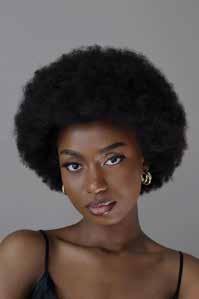

in conditioners and natural oils speaks to your dedication to healthy, consistent care.
You are…
Deeply rooted in culture and selfawareness, a wellness enthusiast who values natural, holistic living and more often than not you are the thoughtful friend who recommends tried-and-true remedies
Your hair represents a conscious decision to honour your identity. It isn’t about striving for flawlessness it’s about being authentic, confident, and at ease in your own skin.
The Ever-Changing Style Enthusiast
Your hairstyle is never the same for
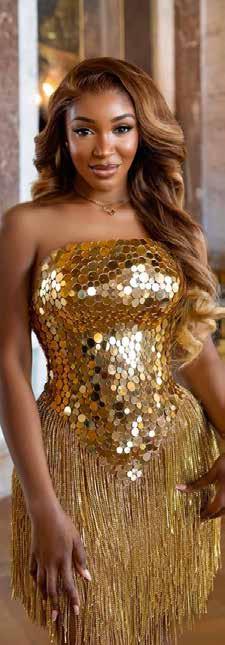
long—and that’s intentional. From box braids to a tapered cut, a sleek bob to a head wrap, your look evolves constantly to match your mood, lifestyle, or inspiration of the moment. You embrace the versatility that Black hair offers and see it as a powerful form of self-expression. You are…
A creative individual who enjoys exploring different versions of yourself. Someone who thrives on change and innovation and the go-to friend for beauty and style recommendations
Your hair reflects your dynamic personality and willingness to evolve. It’s not about sticking to one look, it’s about owning every version of yourself with confidence and clarity.
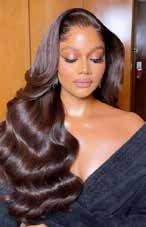

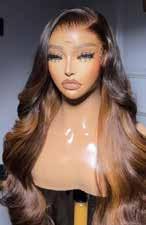

THE LACE FRONT ENTHUSIAST
THE BRAIDS AND BUNDLES WOMAN
THE AFRO NATURALISTA
IDIA AIESIEN
THE WHITE SHIRT REIMAGINED

If there’s one item proving its worth in wardrobes right now, it’s the white shirt. Once seen strictly as office wear, it has shed its stiff, buttoned-up image and is now being styled with fresh, fashionable intention. Worn to brunch, layered for a casual-chic look, or paired with bold pieces at weddings and afterparties, the white shirt is everywhere—and more versatile than ever.
By Aliyah Olowolayemo
What’s driving this quiet takeover is the growing desire for clothes that work harder. Pieces that move with you, adapt to your lifestyle, and still deliver on style. The white shirt does all of that with ease. It’s no longer just a basic; it’s a styling tool, a statement, a blank canvas you can dress up or down depending on your mood.
Oversized versions are especially having a moment. Forget stiff collars and tight tailoring—these shirts drape, flow, and soften everything around them. Worn over biker shorts, tucked into denim, or thrown over swimwear, the oversized white shirt brings relaxed elegance to even the most casual looks. And it’s not just for women. Men are styling them too—paired with cargo trousers, shorts, or even agbada-inspired fits—often adding in sunglasses, hats, or jewellery for that effortless

finish.
Fashion lovers on social media have embraced the trend, proving over and over that a well-worn white shirt can elevate even the most mundane outing. There’s an ease to it, a coolness that doesn’t try too hard. Pressed or rumpled, styled with slides or sneakers, it always delivers.
Beyond casual wear, the white shirt has also become the ultimate layering piece. Whether it’s worn under a slip dress, open over a camisole and wide-leg pants, or tied at the waist, it offers structure without formality. It brings polish, but in a way that feels unfussy. In the office, it’s still present—but now it’s paired with palazzo trousers, loafers, or bold accessories that inject personality into traditional workwear.
Even formal settings aren’t immune to the shirt’s charm. The classic tucked-in look still works, but many are refreshing it with brooches, scarves, or layered
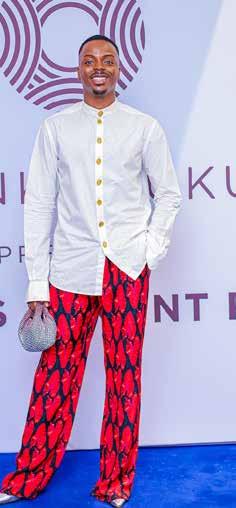

WHY ART IS HAVING A POP CULTURE MOMENT AGAIN — AND WHO’S COLLECTING IT
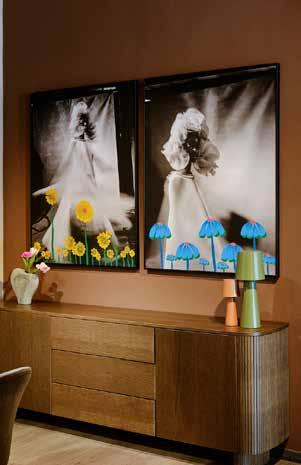
chains that break the monotony and add edge.
And then there’s its magic when styled with traditional fabrics.
Whether tied over a vibrant ankara skirt, worn open over a crop top and wrapper, or styled with brocade trousers, the white shirt becomes the perfect contrast— sharp, clean, and effortlessly modern. It softens formal fabrics, updates traditional silhouettes, and allows personal style to shine through.
What makes the white shirt even more appealing is its ability to transition throughout the day. With a simple switch of accessories— from sneakers to heels, a tote to a mini bag, minimal makeup to bold lips—the same shirt transforms. What felt casual at lunch becomes chic by dinner.
The white shirt is no longer what you wear because you’ve run out of options—it’s what you wear because you know exactly what you’re doing.


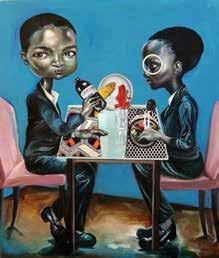
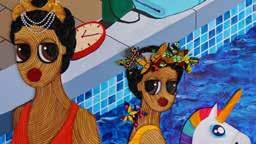

For years, collecting art in Nigeria was seen as the sport of the ultra-wealthy, the foreign-educated, or the culturally elite—a language spoken in soft tones, in rooms with polished floors, and rarely with price tags on display. But that era is shifting. A new wave of collectors—young, curious, and unapologetically Nigerian— are transforming the meaning of ownership. They’re not just buying art. They’re claiming space, identity, and a visual vocabulary of their own lives.
“People always assume collecting is about status,” says Nneka, a 32-year-old creative director who recently bought her first piece at a pop-up show in Lagos. “But for me, it’s personal. This work reminded me of my childhood”. And that’s really what makes this moment feel different. The new generation of collectors isn’t waiting for cultural institutions or foreign validation. They’re collecting what speaks to them— works that feel like echoes of their own stories. Some are buying from galleries. Some are buying off Instagram. Some commission directly from artists. Some buy for aesthetics, while others buy for emotion. Many buy both.
Whatever the case, they are buying.
This isn’t just a sentimental trend. There’s real capital flowing through Nigeria’s art world, and international markets are paying attention. When Osinachi, Nigeria’s leading crypto-artist, sold his NFTs at Christie’s, it wasn’t just a win for digital art; it was a resounding reminder that Nigeria isn’t just exporting oil and Afrobeats. We’re exporting visual culture. And it’s commanding global value.
Art is also becoming an
investment—one with cultural dividends. In uncertain economic times, when inflation devalues the naira and real estate feels inflated, art offers a compelling alternative. It’s tactile, beautiful, and if chosen well, can quietly appreciate in value. For some young Nigerians, buying an original work by a rising star like Ibe Ananaba or Ayobola Kekere-Ekun is a statement of both taste and foresight. There’s also the clout factor. Art has quietly become a new marker of taste among Lagos’ cultural class. Having a striking piece hanging behind your desk during a Zoom call says something. Documenting your visit to a contemporary show at Rele or an installation at Art X Lagos makes you visible in the right circles. And for Nigerian celebrities, showing off investment art in your home is as much a flex as a luxury car. But perhaps what’s most exciting is how collecting is being redefined. The term “collector” no longer belongs to a silver-haired man with a house in Ikoyi and a portfolio of Ben Enwonwus. It now includes the 27-year-old stylist who’s collecting photography prints, the fintech founder who’s curating ceramic sculptures, the Abuja-based lawyer buying textile art that reminds her of her grandmother. The lines between art and fashion, identity and investment, personal space and public statement have never been blurrier—and that’s the beauty of it.
Even the spaces where art lives have evolved. Exhibitions no longer feel like gated intellectual enclaves. At Art X Lagos, you’re just as likely to run into a banker as you are a DJ, a gallerist, or a 19-year-old in thrifted vintage taking it all in. There’s music, energy, language, politics. It’s less about solemnity and more
about immersion. People are not just looking at art—they’re feeling it, debating it, and yes, buying it. And then there’s the emotional hunger. After years of economic uncertainty, identity crises, cultural loss, and migration, art offers something rare: stillness. Collecting a work that feels intimate, whether it’s a painting, a sketch, or even a digital collage, can feel like reclaiming a piece of clarity. It’s worth noting that this moment didn’t arrive in a vacuum. The foundation was laid by giants—Ben Enwonwu, Bruce Onobrakpeya, Yusuf Grillo, Nike Davies-Okundaye—artists who carried culture through turbulent times. Today’s moment feels like their legacy is being reborn, not by institutions, but by individuals. By those curating their homes, their digital spaces, their futures. Art is having a pop culture moment. But it’s also having a personal one. It’s not about trends or taste alone—it’s about memory, identity, and belonging. If you’re not collecting yet, you’re not just late. You’re missing one of the most important cultural shifts of our time.
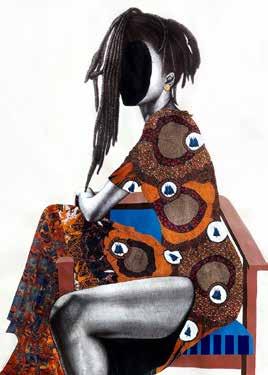
NDIDI EMEFIELE
ENIOLUWA ADEOLUWA
KATE HENSHAW
SANCHAN ELEGUSHI
JACQUELINE SUOWARI
AYOBOLA KEKERE EKUN
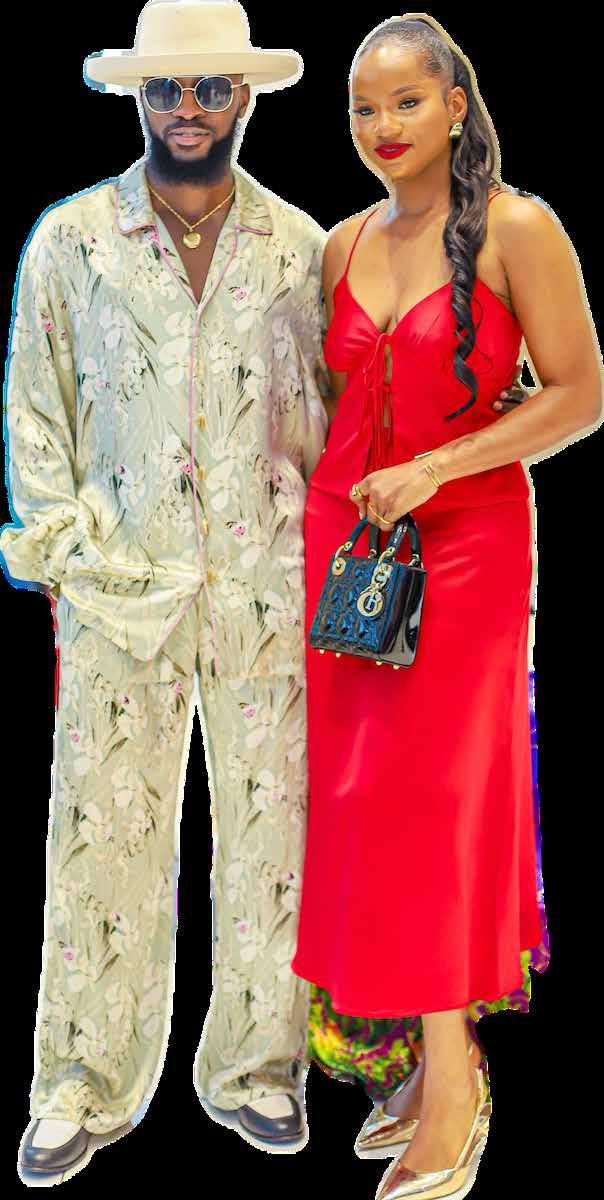
WHO REALLY SETS FASHION TRENDS NOW?
Fashion used to have a clear structure. Trends began in the ateliers and boardrooms of global fashion houses, were unveiled at fashion week, endorsed by magazines, and eventually made their way into the closets of everyday people. It was a trickle-down system, hierarchical and tightly controlled. At the top were designers and creative directors, followed by celebrities, stylists, and then, far down the line, the consumer.
That system no longer exists. Or rather, it no longer operates with the same authority. In today’s fashion ecosystem, influence is scattered, fluid, and often unpredictable. The path between creation and adoption has collapsed into seconds, and fashion’s power structure has been reshuffled. The question is no longer “What are the designers saying this season?” but “Who are people watching and what are they wearing?”


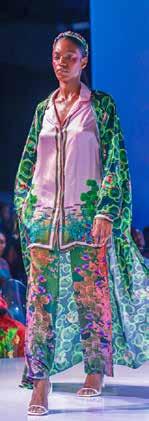
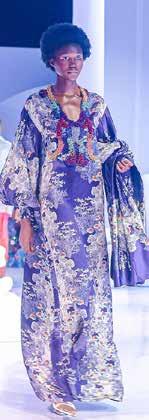




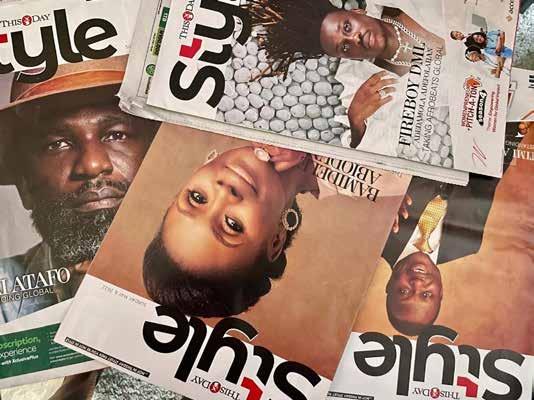
We live in a time where social media, especially Instagram, has become the primary driver of style influence. What’s popular isn’t necessarily what’s on the runway. It’s what’s being shared, saved, and reposted online. Algorithms now compete with artistry. Trends are born from mood boards, styling reels, tagged posts, and viral captions — not necessarily from press releases or fashion show recaps.
Instagram, in particular, has evolved from a platform to showcase personal style into the modern-day fashion capital. It is where taste is tested in real-time and where a single

image, if framed, filtered, and styled correctly, can set off a chain reaction. The platform’s visual-first format means that clothes are judged not by their craftsmanship or context, but by how well they perform on a screen. Is the silhouette distinct enough to stop a scroll? Is the colour palette bold enough to spark a trend? These are the new metrics of fashion relevance. This digital shift has also removed traditional gatekeepers. Fashion magazines still matter, but they no longer control the narrative. Editors now coexist
with content creators. Street style, once considered an afterthought, has become a primary source of inspiration. The influencer isn’t simply copying the runway; they’re reinterpreting it, remixing it, and in many cases, replacing it. What’s particularly fascinating is how this change plays out in contexts like Nigeria, where fashion is not only an expression of personal identity but also of culture, status, and creativity. For Nigerians, fashion is not passive; it’s active, performative, and deeply social. Social media
amplifies this instinct. Platforms like Instagram allow individuals to participate in global style conversations while bringing their own regional aesthetics to the forefront.
As a result, the way Nigerians engage with fashion trends is no longer about following what’s popular abroad. It’s about curating, adapting, and creating style narratives that resonate locally but have the power to travel globally. A visual trend may start in one corner of the world, but by the time it appears in Lagos or Abuja, it has been reinterpreted to reflect a distinct sense of culture and individuality. And often, that reimagined version becomes the more influential one.
It’s also worth noting how quickly trends now rise and fall. The lifecycle of a fashion moment has never been shorter. What’s “in” today might feel dated in a few weeks, not because the clothes have changed, but because attention has shifted elsewhere.
In this fast-paced environment, the goal is no longer to simply keep up — it’s to stand out. Originality is currency.
And yet, even with this freedom and fluidity, fashion has not become chaotic — it has become layered. There are now multiple trendsetters operating at the same time. Some are digital creators. Others are stylists working behind the scenes. There are fashion writers shaping the discourse, and there are consumers who unknowingly influence others simply by being consistent and intentional in their aesthetic. Influence is no longer determined by status, but by resonance. Whose style feels relevant? Whose point of view is fresh? Who is saying something through what they wear — and are people listening?
Interestingly, the red carpet still remains a stage for style, but its function has changed. It is no longer just a platform for formalwear or a designer
showcase. It has become a content opportunity. Every look is created with viral potential in mind. Stylists are strategic about creating moments that can live beyond the event — through press photos, Instagram grids, and fashion blogs. The red carpet may not initiate trends as often as it once did, but it still has the power to validate them. If a look gains traction online after a major event, it often signals a shift in how that trend will be received in broader circles. Meanwhile, stylists have emerged as some of the most powerful players in fashion’s current hierarchy. They bridge the gap between designer intention and public reception. They understand the language of social media, the demands of visibility, and the psychology of impact. In many ways, they are the new creative directors — not just dressing people, but crafting images that shape how fashion is consumed.
This all leads to a more democratised, but also more fragmented, fashion landscape. There is no single source of authority anymore. Instead, there is a dynamic network of influence. Style can emerge from anywhere — a viral outfit video, a well-styled ad campaign, a celebrity sighting, a clever reel, or even a tweet with a strong point of view. The power is not concentrated at the top; it’s distributed across platforms, people, and posts. And that, perhaps, is the most interesting thing about fashion today. It has become a mirror — not of trends, but of attention. In this new order, fashion is not just about aesthetics. It’s about relevance. It’s about connection. And most importantly, it’s about participation. Everyone is part of the cycle now — not just as consumers, but as curators, commentators, and creators. That doesn’t mean fashion is losing its magic. If anything, it means the magic is spreading.
AKIN FAMINU AND NONYE UDEOGU
ABAYA LAGOS BABAYO BANKE KUKU. DERIN ODUGBESAN VERONICA
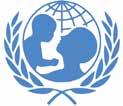


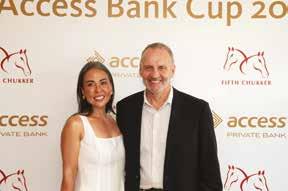




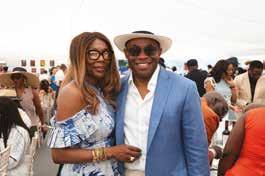


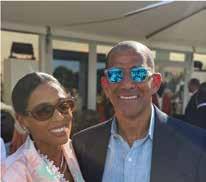










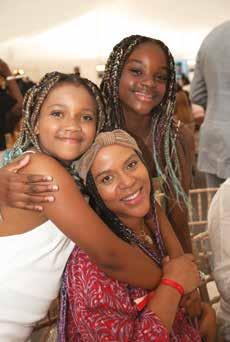
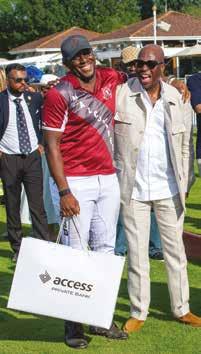
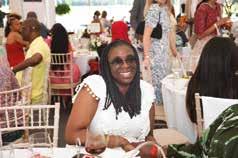
PURPOSE IN EVERY PLAY

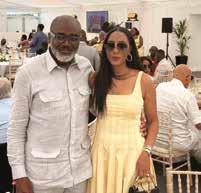




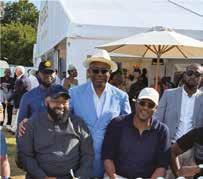


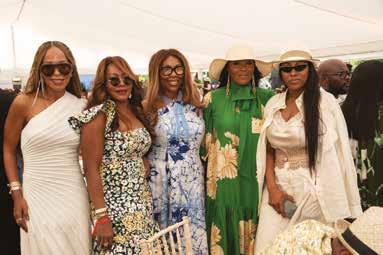





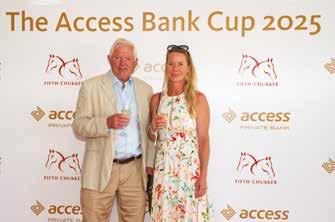

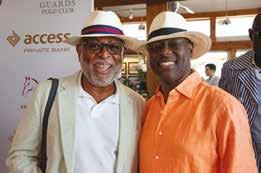
Access Bank, UK in partnership with Fifth Chukker, Guards Polo Club (UK), and UNICEF, united leaders and influencers for a day dedicated to sport and philanthropy. The event aimed to raise funds for underprivileged children, with a focus on expanding access to quality education in underserved communities in Northern Kaduna.
This year, we build on our commitment to driving change, harnessing the power of influential voices to amplify impact and transform lives through education.
Aigboje Aig-Imoukhuede, Thomas Tuchel, Mstr Ogbonna and Adamu Atta
Mariam and William Tewiah Lorna and John Holland
Gabriel and Godrey Ogbechie with Aigboje Aig-Imoukhuede
Ofovwe and Aigboje Aig-Imoukhuede Ayo Olashoju, Jamie Simmons and Seyi Kumapayi
Roosevelt Ogbonna
Mohammed Umar Bago, Aigboje Aig-Imoukhuede, and Dikko Umar Radda
Ngozi and Uche Orji
Alejo Aramburu, Reni Folawiyo and Emir of Kano, Muhammadu Sanusi II
Giles Peppiatt
Ofovwe and Renuan Aig-Imoukhuede
Aisha and Gbenga Oyebode
Yasin Amusan and Tunde Folawiyo
Ronald Buijk and Mariette van Reeuwijk
Dikko Dahiru Mangal and Tochi Wigwe
Aigboje Aig-Imoukhuede, Adolfo Cambiaso and Adamu Atta
Justin Maria, Renald Theuma and Ernest Law
Bolaji Agbede
David Morley and Esther Hunt
Richard Akerele and Femi Agbaje
Anita Ibru and daughters
Olutayo Ayeni and Admiral Dele Ezeoba
Kemi DaSIilva-Ibru, Tola Adegbite, Ngozi Orji, Titi Ogunbanjo and Ayo Amusan
Florent Venturini, Sangeeta Assomul, Jean Hass and Vincent Hass
Aigbovbioise and Funke Aig-Imoukhuede
Paul Usoro and Emir of Kano, Muhammadu Sanusi II
FIRST LADIES, FIERCE ADVOCATES THE WOMEN BEHIND FLAC
Cancer doesn’t care about geography, status, or politics—but access to care often does. And in Nigeria, where too many are still diagnosed too late and treated too little, a group of women— current and former First Ladies—are determined to change that reality. First Ladies Against Cancer (FLAC) is a coalition of the spouses of serving and former state governors, united by a shared mission: to improve cancer outcomes for Nigerians through awareness, access, and advocacy. From organising free screening programs in underserved communities to pushing for life-saving policy reforms, FLAC has become one of the country’s most powerful forces for equitable cancer care. Since its inception in 2015, the coalition has operated with purpose and clarity, steadily gaining national recognition. In the last four years, under the leadership of Dr. Zainab Shinkafi-Bagudu, the coalition’s visibility and impact have grown significantly, thanks to her tireless advocacy that helped place cancer firmly on the public health agenda Now, with Her Excellency, Chioma Uzodimma, First Lady of Imo State, as Chairperson, FLAC is entering a new era— one focused on deepening partnerships, strengthening state-level interventions, and ensuring that no Nigerian is left behind in the fight against cancer. Supporting her are HE Lami Fintiri of Adamawa as Vice Chair, HE Huriyya Dauda Lawal of Zamfara as National Secretary, and HE Bamidele Abiodun as Treasurer, forming a leadership team that is already moving with decisive urgency.
In this exclusive joint interview, eight FLAC members, who include past and present first ladies, reflect on what drives their commitment, the challenges that remain, and how they are using their positions to shape a future where quality cancer care is not a privilege, but a right.
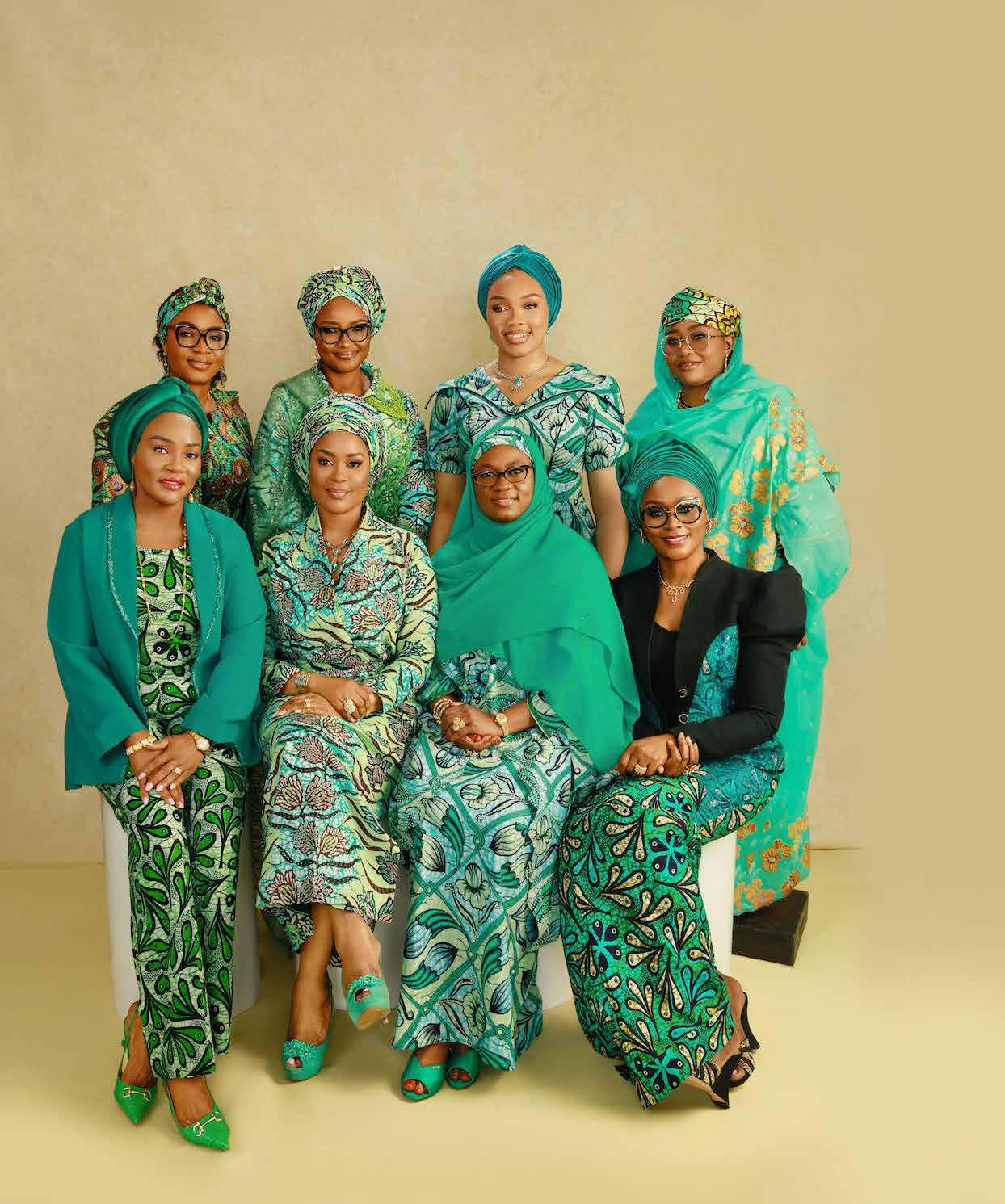
H.E. BARR. CHIOMA UZODINMA
(FIRST LADY OF IMO STATE AND FLAC CHAIRPERSON)
You’re stepping into a role that combines compassion with policy, advocacy with execution. What’s the one thing you’re most eager to change or amplify as Chairperson of FLAC?
One of my key priorities is to actively advocate for and engage both current and former First Ladies who are not yet members of our coalition. Imagine the power and reach we would have if every sitting and past First Lady in Nigeria joined forces under the FLAC platform. Together, we could catalyse a nationwide transformation in the cancer care ecosystem. This expanded membership drive is not just about numbers; it is rooted in a shared commitment to amplifying equity in cancer access. Awareness alone is not enough, especially when it is confined to urban centres. We must ensure that people, particularly women and children in remote villages and underserved communities, have the same opportunities for early detection, timely diagnosis, treatment, and ongoing care.
We will design and implement strategies that intentionally reach beyond city limits. These will include scaling mobile medical outreaches, expanding community-based screening programs, supporting systems for effective referrals and follow-up care, and advocating for state-level cancer support policies that are inclusive and responsive to grassroots needs. Our ultimate goal is to bridge the critical gap between knowledge and access, because saving lives depends on both.
How do you plan to navigate the challenges of working across states with very different healthcare systems, priorities, and political dynamics? Navigating diversity requires humility, diplomacy, a shared mission, and an effective strategy. As Chairperson, I see myself as a collaborator and partner in a worthy cause. Each First Lady operates within unique contexts, but cancer affects all our people, and that gives us common ground. plan to foster peer learning, encourage state-specific innovations, and strengthen FLAC’s coordination mechanisms so we can align our efforts while honouring each state’s realities. FLAC will work to provide the needed support required for each First Lady to thrive within their states in the fight against cancer, while bearing in mind the collective and coordinated front we must always present as a group. We are stronger when we share what works, implement unified strategic objectives, and collectively raise the standard of care across Nigeria.
We often talk about awareness, but access is the bigger hurdle. What’s your strategy for ensuring that rural and underprivileged women don’t just know about cancer, but can actually access care? This is where advocacy must meet infrastructure. My strategy to ensure equitable access to cancer care, especially for rural and underserved communities, is
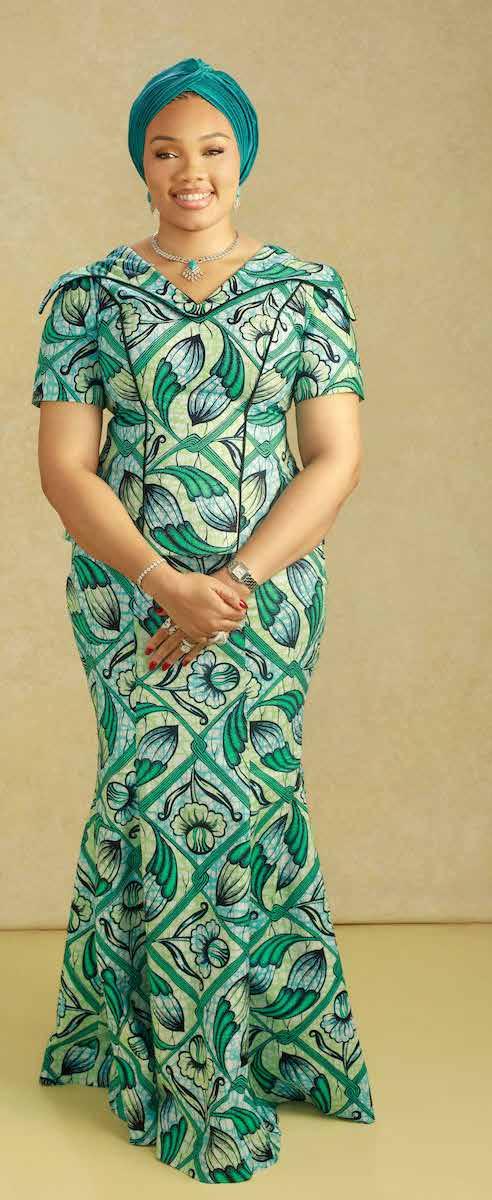
built on four interconnected pillars:
First, we will deploy mobile clinics and community-based outreaches in rural areas, working in close partnership with state ministries, faith-based organisations, NGOs, and other key stakeholders. Early diagnosis significantly reduces cancer mortality, and this grassroots approach will enhance awareness, education, and access to early screening and detection, integrating these services into the broader cancer care continuum—from prevention to treatment and survivorship.
Second, we will intensify advocacy efforts to expand cancer care coverage under both state and national health insurance schemes, with a strong focus on protecting low-income individuals. The current reality is that most cancer patients pay out of pocket, often with catastrophic consequences for their families. By pushing for policy reforms and increased investment in health financing, we can reduce this burden and make cancer care more affordable and inclusive.
Third, we will collaborate closely with the National Primary Health Care Development Agency (NPHCDA) and State Ministries of Health to strengthen cancerrelated services at the primary healthcare level. This includes improving routine screening, ensuring timely referrals, and integrating cancer prevention into existing maternal and child health programs.
Fourth, none of this can be achieved without strategic, multi-sector partnerships. Sustainable change requires the active involvement of stakeholders who can bring resources, technical expertise, and shared accountability. We will partner with government stakeholders such as the Federal Ministry of Health and Social Welfare, the National Institute for Cancer Research and Treatment, the National Taskforce on Cervical Cancer Elimination, etc., to ensure that we align with national programmes and policies such as National Cancer Control Programme, Partnership for the Elimination of Cervical Cancer in Nigeria, and other relevant programmes implemented at across Nigeria. That way we do not work in silos. Partnership is the engine that drives systemic transformation, and we must take advantage of it to succeed.
At the core of this strategy is a deep conviction: knowledge without access is a form of injustice. My commitment as Chairperson of FLAC is to help turn awareness into action, and access into a reality for all.
Your background in law and public service gives you a unique vantage point. How will you leverage your legal and civic influence to drive systemic policy support for cancer care and research?
Law is a powerful tool for justice, and in this case, health justice. will use my legal background to advocate for stronger cancer-related legislation and enforcement, particularly around health financing, insurance coverage, and patients’ rights. believe that with the right partnerships, we can engage with legislators to sponsor or support bills that
institutionalise cancer screening programs and vaccinations, regulate tobacco and alcohol consumption, and prioritise cancer research funding. Policy must transition from goodwill to governance, and believe FLAC can serve as a bridge between the two.
FLAC just launched the “Friends of FLAC” initiative to bring in cross-sector allies. How do you plan to keep them engaged long after the photo ops and gala lights go off?
“Friends of FLAC” is more than a campaign or a one-time event. It’s a call to co-own this mission. To sustain their engagement, we plan to build a structured partnership ecosystem with clear roles, measurable deliverables, and mutual value. We’ll host periodic learning and accountability forums, highlight their impact through storytelling, and ensure that partners see how their investments translate into lives touched. We’re not just asking for support— we’re inviting enduring collaboration. Real change outlives photo ops, and that’s the vision we’re casting.
As Chair, how do you plan to measure impact? Beyond events and MoUs, what does success look like for you in the next 12 to 18 months?
Success must be tangible. For me, impact will be measured through clear, meaningful outcomes, including:
The number of women and girls screened, diagnosed, and treated across member states. The expansion and integration of cancer programs into state-level primary healthcare systems.
The resources mobilised through FLAC’s collective advocacy and the Friends of FLAC initiative.
Policy achievements, such as increased state budget allocations for cancer care and improved health financing mechanisms
A FLAC that is more visible, influential, and data-driven—leveraging powerful storytelling, strategic communication, partnerships and impactful projects to position the coalition as a central force in Nigeria’s cancer control ecosystem.
Over the next 12 to 18 months, I envision FLAC not only expanding into more states but also launching innovative, community-responsive, and evidence-based programs that create real, measurable impact. I want to see us move boldly from advocacy to sustainable, institutional change—ensuring that the lives we touch today are protected by the systems we build for tomorrow.
This is a deeply human cause. What personal experiences or moments have shaped your commitment to this fight — and how do they inform how you lead?
This journey is deeply personal. I’ve seen close relatives, friends, and constituents lose loved ones—not because they didn’t care, but because they didn’t have enough knowledge, resources and access to fight and overcome the disease. I’ve walked with women who discovered cancer too late, and with families who sold everything to buy another month for a relative diagnosed with cancer. These moments are seared in my heart. They remind me that behind every statistic is a story, and behind every policy must be compassion. I lead from that place of deep empathy and unwavering resolve—because this work is not optional, it’s urgent.

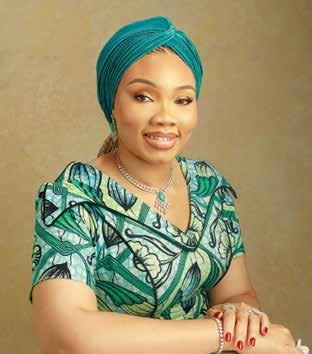



H. E. HAJIYA LAMI AHMADU FINTIRI
FIRST LADY OF ADAMAWA STATE AND VICE CHAIRPERSON, FLAC
What drew you personally to cancer advocacy, and how has the journey shaped your understanding of leadership and public service?
Cancer is a silent crisis that continues to claim countless lives, particularly among women who are often the pillars of our families and communities. My journey into cancer advocacy began when encountered several women in Adamawa State suffering in silence, mostly due to lack of awareness, fear, and financial constraints. I knew then that I had to use my voice and position to amplify their needs. This advocacy has deepened my understanding of leadership as a call to service, not just to speak, but to act, to walk beside people through their pain, and to ensure that no one is left behind. True leadership, I’ve come to learn, means using influence to give others hope and a fighting chance at life.
What role do you think women in visible positions can play in normalising early screening and conversations around cancer in conservative or underserved communities?
Women in leadership, especially First Ladies, have a unique influence that transcends policy. We are mothers, wives, and sisters, and our voices resonate in ways that can shift cultural mindsets. In conservative and rural communities where cancer is often seen as a taboo or death sentence, our role is to demystify the disease, encourage early screening, and promote access to life-saving information. By leading open conversations, undergoing screenings publicly, and sharing survivor stories, we help break the silence and fear that surround cancer. In Adamawa, we are committed to taking this message to every ward, every village, and every woman, because knowledge is the first cure.
Many of your peers work on a variety of issues — from genderbased violence to maternal health. Why is cancer a cause worth staying committed to long after the spotlight fades?
Cancer affects every part of a woman’s life, her health, her dignity, her ability to nurture, and even her economic independence. While maternal health and gender justice remain critical, cancer is a threat that cuts across all these dimensions. Staying committed to this cause is not about visibility; it’s about impact. Long after the cameras are gone, the pain of cancer patients remains. That is why I have made cancer awareness, screening, and support a permanent pillar of my office’s intervention. Our fight continues until screening is routine, treatment is accessible, and survival becomes the norm, not the exception.
What has been the most emotionally difficult part of this work — and what keeps you going?
The hardest moments are seeing young mothers or promising young women lose their lives simply because they couldn’t afford a test, didn’t recognise the symptoms, or were too afraid to speak up.
But what keep me going are the survivors, the women who, after receiving support, beat cancer and now help others do the same. Their resilience, and the prayers from families we’ve touched, fuels my determination. We cannot afford to stop, not when lives are at stake.
The power of First Ladies working together is significant. Do you think the FLAC model can be replicated for other health or social issues? If so, what cause would you champion next?
Absolutely, the FLAC model has proven that when First Ladies unite, we can drive national change from the grassroots up. The strength of our collective voice, backed by action, is transforming how cancer is viewed and treated in Nigeria. believe this model can be replicated for issues like mental health awareness, drug abuse among youth, and the education of the girl child. For me personally, after cancer, would champion access to psychosocial support for women and children affected by conflict, especially in Adamawa State that has experienced insecurity. Healing must go beyond the physical; it must touch the soul.
H.E. BARR. CHIOMA UZODINMA Continued
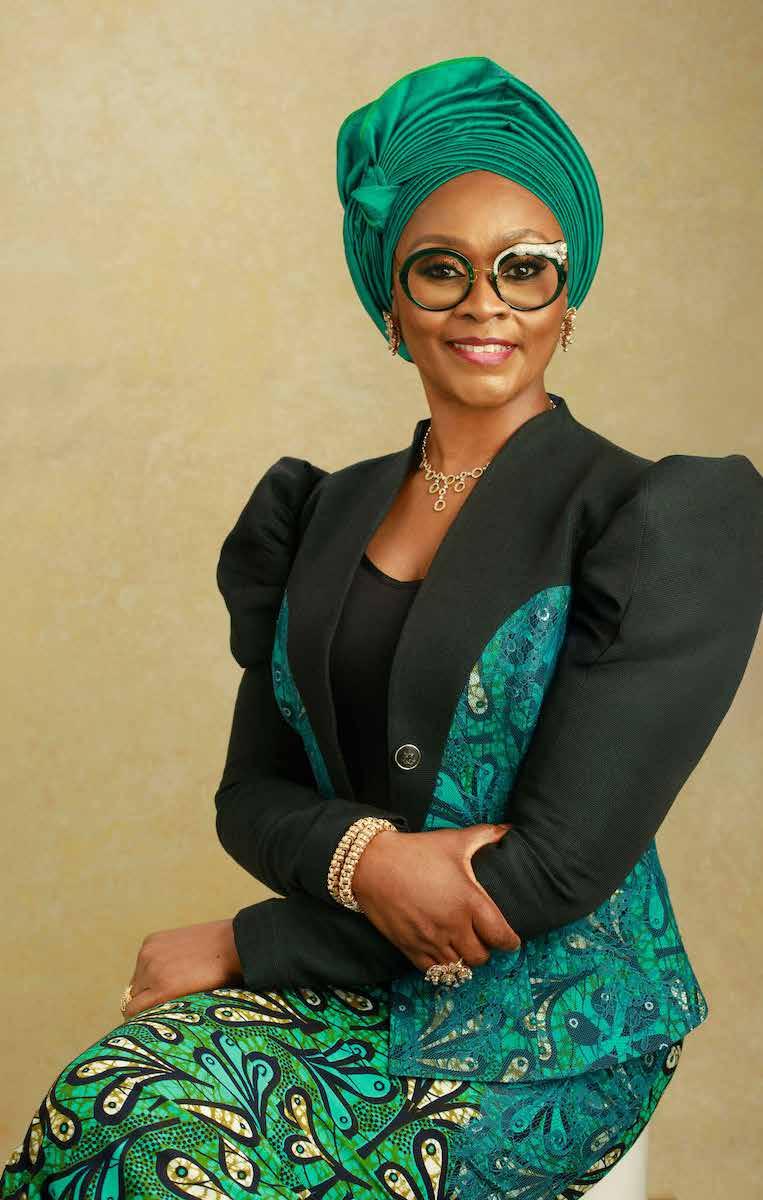

HE MRS BAMIDELE ABIODUN FIRST LADY OF OGUN STATE AND FLAC TREASURER
What drew you personally to cancer advocacy, and how has the journey shaped your understanding of leadership and public service?
For me, I think it was a personal experience from when I was very young. I discovered a lump in my breast in my late teens. It was quite small and not painful, but remember mentioning it to my dad, who took it very seriously. We went and had it checked and removed. Later, found out that that small discovery might have saved my life. In the years since then, several people I know, some quite close to me, have had one form of cancer diagnosis or another; some were caught early, others discovered when it was late. For the ones that died, it was a very painful experience, not just for me personally for but the family they left behind. This is the main thing that has shaped my cancer advocacy. However, later when my life began in public service, discovered that there is a huge need for advocacy and sensitisation of people, especially those in the grassroots.
What role do you think women in visible positions can play in normalising early screening and conversations around cancer in conservative or underserved communities?
This particular point is what I believe is the most critical point in having uncomfortable conversations around cancer within our communities. As women who have influence in our communities, our first job is to get all the important stakeholders involved, especially those voices that have influence over the people. Religious leaders, traditional eaders, community mobilisers and so forth. Cancer is no respecter of persons or religions; saying “God forbid,” may not solve the problem. Rather, providing critical information that people need can be the difference between life and death.
Many of your peers work on a variety of issues — from gender-based violence to maternal health. Why is cancer a cause worth staying committed to long after the spotlight fades?
It is a known fact that women bear a disproportionate burden of cancer in Africa. Cervical and breast cancers continue to kill women in our communities, simply because we find out too late. It is also a known fact that many of these deaths are preventable, yet the barriers remain the same: late diagnosis, limited access to screening, stigma, and the high cost of treatment. That is why, through FLAC, we are building a sustained, long-term response, even after we are no longer the first ladies of our respective states. We are also advocating for national cancer control plans, expanding screening and early detection, and pushing for better access to care through private sector and international partners.
What has been the most emotionally difficult part of this work — and what keeps you going?
For me, it is usually when people share their personal stories of cancer; maybe if their family member has died, or if they have been diagnosed and it is looking terminal. Cancer affects the entire family, and some of these stories are quite heartbreaking. There are people who went to seek unproven alternative solutions and ended up worse off than when they began. It is tough, but we appreciate the fact that they come forward to tell their stories to encourage others to take cancer seriously.
The power of First Ladies working together is significant. Do you think the FLAC model can be replicated for other health or social issues? If so, what cause would you champion next?
Absolutely, the FLAC model is quite effective. I am a witness to how powerful our voices are nationwide. We can hardly be ignored. It proves that when First Ladies come together with a shared purpose, we can mobilise resources and drive national conversations in ways that few others can. remember when we all came together during the COVID pandemic and a national emergency was declared against gender-based violence, because we showed up in our different states. Our collective voice carries weight, and can shape policy and save lives.
H.E. DR. ZAINAB SHINKAFI-BAGUDU IMMEDIATE PAST FLAC CHAIRPERSON AND
FORMER FIRST LADY OF KEBBI STATE
You’ve spent the last four years growing FLAC into a visible and impactful coalition. What was the most defining moment of your tenure — the one that made you pause and say, ‘This is why we do this’? Thankfully, I have had many moments where the work that FLAC does has caused me to pause and celebrate the impact of the First Ladies and their NGOs across the country. However, one truly stands out as the most defining, and it is the introduction of HPV vaccination into Nigeria’s routine immunisation schedule and its subsequent national launch, over 13 million adolescent girls being vaccinated across the country. This was a monumental achievement for Nigeria. And I am happy to share that it was built on lessons learned from pilot vaccination programs that FLAC had championed and successfully implemented in various states. Seeing a critical, evidence-based cancer prevention measure, which we had advocated for and demonstrated its feasibility at a sub-national level, finally become a part of the national health policy was incredibly powerful. It made me pause and say, ‘This is why we do this’, because our advocacy, our pilot programs, and our collective efforts directly translated into a nationwide intervention that will save countless lives from cervical cancer for generations to come.
What were the behind-the-scenes realities of running a coalition of First Ladies: the politics, the emotions, the expectations? How did you hold it all together?
Leading FLAC was a unique experience, where each First Lady brings her own distinct passion, influence, and priorities that are centred on the citizens of their state. I sought to always employ a delicate balance of diplomacy, clear communication, and a shared commitment to our overarching mission. My approach was always rooted in transparency and a strong emphasis on our common goal, to reduce the cancer burden in Nigeria. We fostered an environment of mutual respect, where every voice was heard and valued. Regular, open dialogues, strategic planning sessions, and celebrating each other’s successes helped build a strong bond. The magic has to be the unwavering dedication of each First Lady to cancer control; it held us together and propelled our collective impact.
As a medical doctor, you’ve brought a rare clinical perspective to this role. How did that influence how FLAC prioritised its initiatives, and how were you able to balance science with advocacy?

My medical background played a significant role in my leadership at FLAC; however, it is not a requirement to lead the coalition. It allowed me to approach cancer control not just from an advocacy standpoint, but with a deep understanding of the disease’s continuum of care, the patient journey, and the critical importance of early detection and patient-centred clinical management. We focused heavily on initiatives that were scientifically proven to yield the greatest public health impact, such as screening programs for cervical, breast, and prostate cancer, and advocating for access to essential diagnostics and affordable treatment.
Balancing science with advocacy meant translating complex medical information into actionable, relatable messages for the public and policymakers. It involved using data to make our case for increased funding and policy changes, while also ensuring our campaigns resonated emotionally and culturally with communities. The science provided the “what” and the “why,” while advocacy provided the “how” – how to mobilise resources, influence policy, and, to crown it all, save lives on a larger scale.
You’ve now passed the baton. What would you advise the incoming Chairperson to protect at all costs — and what do you hope she does differently?
To the incoming Chairperson, I would advise her to protect and continue to nurture the unity and collaborative spirit of the First Ladies. This coalition’s

strength lies in its collective voice and the diverse reach of its members. Nurture that synergy, for it is our most potent tool for change. She should also prioritise the patientcentred approach of FLAC. Every policy, every program, and every fund raised must ultimately serve the needs of those affected by cancer.
As for doing things differently, I hope she brings her unique vision and energy to innovate in digital advocacy and technology integration. The landscape of health communication is evolving rapidly, and there’s immense potential to leverage digital platforms for even broader awareness. I also hope she explores new avenues for sustainable funding models, ensuring FLAC’s programmes are resilient and transformative.
Now that your term is over, how do you plan to continue your advocacy — not just as a former First Lady, but as a global cancer champion and current UICC President-Elect?
My role as President-Elect of the Union for International Cancer Control (UICC) presents an incredible global platform. I have already and will continue using my global network to champion equitable cancer care, focusing on strengthening cancer control programs in low- and middleincome countries, advocating for universal health coverage that includes cancer services, and fostering greater collaboration among global stakeholders. My journey has always been about making a tangible difference in the lives of cancer patients, and I am excited to continue this advocacy at a global level.
H.E. MRS OLUFUNSO AMOSUN FORMER FIRST LADY, OGUN STATE, FLAC MEMBER
What drew you personally to cancer advocacy, and how has the journey shaped your understanding of leadership and public service?
Over the years, have been deeply committed to alleviating poverty, preserving the environment, and supporting vulnerable groups, especially the elderly, widows, unemployed youth, and orphans. Infant mortality, maternal health, safe motherhood issues have also been a top priority for me. Through these engagements, I came across countless individuals silently battling cancer, many of whom lacked even basic awareness about the disease, its risks, or available interventions. As such, it is clear to me that cancer advocacy goes beyond just health issues; rather, it should be regarded as a moral responsibility. The fact that hundreds of thousands of people die annually from various forms of cancer, both globally and in Nigeria, has further intensified my resolve to take action. The journey has been both humbling and inspiring. Through my foundation, Uplift Development Foundation, we have reached out to over 5,000 women through our advocacy and free breast and cervical cancer screening. We have also donated state-of-the-art cancer centres to the State General Hospitals in Abeokuta and SangoOta, as well as to the Olabisi Onabanjo University Teaching Hospital in Sagamu, all in Ogun State.
These initiatives have reaffirmed my belief that leadership must go beyond policy to tangible action. Public service, to me, means using one’s position to champion causes that save lives and uplift communities. Cancer advocacy must therefore be embraced as a key aspect of responsible leadership.
This is why remain committed to the activities of First Ladies Against Cancer (FLAC). We must prioritise awareness, free screenings, mammograms, ultrasounds, and patient support systems—especially for women and underserved populations. It’s not just about fighting cancer; it’s about giving people a fighting chance.
What role do you think women in visible positions can play in normalising early screening and conversations around cancer in conservative or underserved communities?
Women in visible positions, whether in public service, politics, business, or private service, have a crucial role to play in ensuring early screening and breaking the stigmatisation and silence around cancer, especially in conservative or underserved communities.
We must lead by example. When women in leadership publicly speak about cancer prevention, support awareness campaigns, and undergo screenings themselves, it sends a strong message that early detection is key, and encourages others, especially women, to take their health seriously.
Through my work with the Uplift Development Foundation and my active involvement in First Ladies Against Cancer (FLAC), have seen firsthand how community engagement, when driven by women leaders, can break down barriers and increase acceptance of screenings and early intervention.
Many of your peers work on a variety of issues, from gender-based violence to maternal health. Why is cancer a cause worth staying committed to long after the spotlight fades?
Every cause that uplifts humanity—whether gender-based violence, maternal health or mental health issues deserves attention. However, cancer in particular, is a silent and deadly disease that often gets overlooked, especially in rural communities and low-income areas where awareness is minimal and access to healthcare is limited. For me, staying committed to cancer advocacy is about saving lives and giving hope. The spotlight may fade, but the need remains. Cancer affects the rich and poor, young and old, male and female. The traumatic experience and pain of watching someone die from cancer when such can be preventable, through early diagnosis and treatment, compels one to keep going for the sake of humanity.

What has been the most emotionally difficult part of this work, and what keeps you going?
One of the most emotionally difficult aspects of this work is witnessing the pain and helplessness of individuals, especially women, who are diagnosed late, often because they lacked access to healthcare, awareness of the disease, or the confidence to speak up. Most of the time, people don’t realise they have cancer until it is too late. Seeing patients succumb to cancer, leaving behind devastated families, is extremely difficult to witness and accept.
What keeps me going is the belief that any intervention, whether through community awareness or screening outreach, can literally save a life. I’m driven by the conviction that no one should suffer in silence, and that with consistent advocacy, we can change the narrative for future generations.
The power of First Ladies working together is significant. Do you think the FLAC model can be replicated for other health or social issues? If so, what cause would you champion next?
The FLAC model has shown that when First Ladies or women’s groups unite around a common cause, the impact can be far-reaching. It has proven that collaboration amplifies our collective voice and influence. This model is not only replicable but also necessary for addressing all pressing health and social issues. If I were to champion another cause through such a collaborative platform, it would be mental health and maternal mortality issues, especially in rural and underserved settings where awareness is low and cultural/superstitious beliefs are high. Many people, young and old, are battling mental health issues quietly and experiencing high infant mortality cases without adequate support. Just as we are working together to break the silence around cancer, I believe a united front can also help address mental health, safe motherhood and improve policies and access to healthcare.
H.E. DR. LINDA AYADE FORMER FIRST LADY, CROSS RIVER STATE, FLAC MEMBER
What drew you personally to cancer advocacy, and how has the journey shaped your understanding of leadership and public service?
My personal journey into cancer advocacy was ignited by painful personal experiences. I have lost close friends to cancer; some of these losses were especially difficult because the deaths could have been avoided with early detection. These experiences opened my eyes to the devastating impact of late diagnosis and the urgent need for awareness, screening, and access to care. As a medical practitioner and public health physician, I felt a strong moral obligation to step beyond clinical walls and lend my voice to a broader, more proactive movement that could save lives before cancer becomes terminal.
This journey has reshaped my understanding of leadership and public service. It has taught me that real leadership is about empathy, action, and consistency. Public service is most meaningful when it reaches into the lives of ordinary people, meeting them where they are with compassion and solutions. Being part of FLAC and working with other First Ladies who share an infectious drive has reinforced my belief that collective advocacy can break down systemic barriers and bring about lasting change in public health outcomes.
What role do you think women in visible positions can play in normalising early screening and conversations around cancer in conservative or under-served communities?
Women in visible positions have a powerful platform to shape narratives and influence attitudes, especially in conservative or underserved communities. When such women speak openly about health issues like cancer, they help dismantle taboos, reduce stigma, and normalise conversations around early screening. By sharing personal stories or championing regular check-ups, they model proactive health-seeking behaviour and encourage others to do the same. In many traditional settings, where silence often surrounds topics like breast or cervical cancer, it takes trusted voices, like those admired for their leadership, compassion, or spirituality, to break through cultural barriers. These women can also leverage their influence to partner with community leaders, religious institutions, and local media to create culturally sensitive awareness campaigns that resonate with the people. Ultimately, visibility breeds trust. When women in leadership speak out, people listen. FLAC has the ears of women and their admirers across every social level. This makes FLAC a veritable vehicle for cancer advocacy, as its members can use their platforms to normalise early screening, dispel myths, and promote lifesaving information authoritatively and with empathy. Their collective voice is a force for cultural shift, policy influence, and, most importantly, hope.
Many of your peers work on a variety of issues — from gender-based violence to maternal health. Why is cancer a cause worth staying committed to long after the spotlight fades?
Cancer is a cause worth staying committed to because it doesn’t go away when attention shifts. As a medical practitioner, I have seen firsthand how devastating a late-stage diagnosis can be for both the patient and for the entire family. I have also lost close friends to cancer, and what haunts me most is that some of these deaths were avoidable with early detection. Unlike many health crises that draw urgent attention, cancer often progresses silently, striking when it’s least expected. That silence makes it dangerous — and that’s why the advocacy must be persistent. Even when the cameras are off and the public focus has moved elsewhere, people are still getting diagnosed, still battling, and still dying — often needlessly. Continuing the work means refusing to let cancer win by neglect. It means championing preventive care, access to screening, equitable treatment, and support systems. These aren’t seasonal issues; they are matters of life and death. For me, staying committed to cancer advocacy is not just an act of service — it is a moral obligation.
What has been the most emotionally difficult part of this work — and what keeps you going?
The most emotionally difficult part of this work is watching people lose their lives to a disease that could have been caught early or treated more effectively if only they had access to the right information, screening, or care.

It’s heartbreaking to comfort families who are left behind — especially when you know that with just a bit more awareness or timely intervention, things might have turned out differently. As a medical practitioner and advocate, that helplessness stays with you.
What keeps me going is the hope that every conversation, every campaign, and every screening initiative can change someone’s outcome. The resilience of survivors, the courage of those still fighting, and the gratitude of families who got a second chance all serve as powerful motivators. Most importantly, the knowledge that we are slowly breaking the silence and saving lives one woman, one family, one community at a time, gives me the strength to continue.
The power of First Ladies working together is significant. Do you think the FLAC model can be replicated for other health or social issues? If so, what cause would you champion next?
FLAC’s voice is both significant and transformative, commanding attention with its compassion. When women in such visible roles unite around a cause, change becomes not just possible, but inevitable.
The FLAC model is one that can and should be replicated to address other pressing health and social issues. If were to champion a cause, would initiate two projects, and am already planning for this! The first focuses on health maintenance and promotion, with the goal of building a preventive health culture among Nigerians. We need to move from reacting to illness to actively sustaining wellness through lifestyle changes, early detection, and regular health checks. This shift is critical in addressing the rising burden of preventable diseases.
The second is aimed at promoting CPR awareness and basic lifesaving skills. I was personally affected by the sudden loss of a friend who collapsed during exercise. Bystanders watched, panicked, or filmed, but no one attempted resuscitation. By the time he was rushed to the hospital, it was too late to save him. He was only 49. It was a painful reminder that lifesaving knowledge should be as common as knowing how to dial emergency services.
Together, these initiatives reflect my belief that public health must start at the community level, and that with the right awareness and tools, lives can be both protected and saved.
I believe that First Ladies, working together as they have with cancer advocacy, can effectively convey this lifesaving message and help create a nation of first responders.
H.E DR AMINA ABUBAKAR BELLO FORMER FIRST LADY OF NIGER STATE AND FOUNDING CHAIRPERSON OF FLAC, MEMBER
What drew you personally to cancer advocacy, and how has the journey shaped your understanding of leadership and public service?
In my practice as a gynaecologist, I have treated many women with Cancer of the cervix, and in most cases, women present to the hospital at late stages when very little can be done for them in terms of curative treatment. Lack of awareness of cancer is one of the most important causes of late presentation, and it was clear to me that awareness creation would go a long way in saving women’s lives. Leadership gives a good platform to create such awareness. The various positions leaders hold open up opportunities to reach out to many people and provide accurate information that encourages them to take the necessary steps to protect their health.
What role do you think women in visible positions can play in normalising early screening and conversations around cancer in conservative or underserved communities?
Women can normalise early screening by partaking in the exercises themselves and sharing their experiences with the public. They can actively participate in screening exercises, advocacy messages, and awareness creation activities that demonstrate to the public how easy it is to get screened and not be afraid to take the necessary steps to improve their health.
Many of your peers work on a variety of issues — from gender-based violence to maternal health. Why is cancer a cause worth staying committed to long after the spotlight fades?
Cancer for me is an issue that forever stays in the spotlight. Especially for cervical cancer, which is completely preventable when the right steps are taken. It is one cancer that can even be eradicated if we are able to prevent people from getting HPV infections, which is the cause of cervical cancer. There is a vaccine that prevents HPV, and if all girls and even boys get vaccinated against this virus, there will be no cervical cancer. So it is important that we continue to educate people about cancer.
What has been the most emotionally difficult part of this work, and what keeps you going?
The most difficult part is when women are not able to access the services they require, and you see them deteriorating every day. Especially for the women who are motivated to do all they can to get healthy.
The power of First Ladies working together is significant. Do you think the FLAC model can be replicated for other health or social issues? If so, what cause would you champion next?
Maternal health definitely. More women die from child birth related causes than cancer and this is even sadder when you think about it. First Ladies certainly have the ability to pull their weight behind maternal health, like we are doing already, to continue to improve the lives of women in Nigeria.

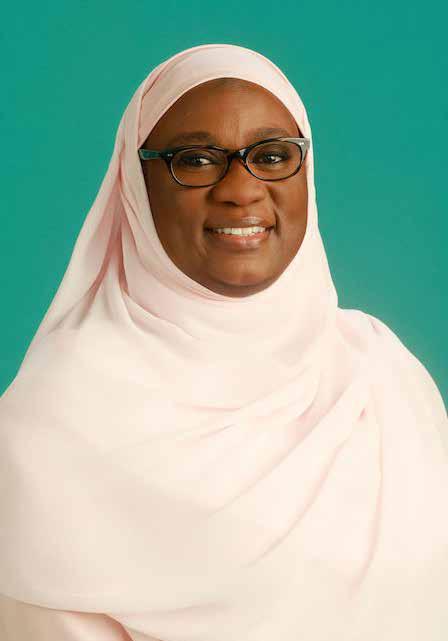
H.E. MRS EUNICE ORTOM
FORMER FIRST LADY, BENUE STATE, FLAC MEMBER
What drew you personally to cancer advocacy, and how has the journey shaped your understanding of leadership and public service?
My passion for cancer advocacy stems from a deep personal experience. As a teenager, I witnessed the silent pain my Mother endured and ultimately lost her to cancer. I firmly believe her death could have been prevented with adequate cancer support systems. This intense experience, coupled with countless stories of advanced cancer diagnoses, not due to individual failings, but from a critical lack of access, information, and responsive support structures, has fuelled my steadfast commitment to supporting individuals with cancer in Benue State and beyond. This urgent need propelled me, as Founder of the Eunice Spring of Life Foundation (ESLF), to deepen its engagement in the health sector, aligning directly with its vision to create a society without barriers to decent living.
This journey has taught me that leadership and public service are fundamentally about ensuring that no one is left behind and that everyone receives the respect and services they deserve. Through ESLF, have woven cancer care into the fabric of public service, offering free screening programs, awareness campaigns, and direct patient support. This experience has also shaped my understanding of leadership as a calling rooted in deep understanding and genuine care. It means being close enough to truly hear the urgent needs of the people we serve, and bold enough to take decisive action, even when existing systems resist. Ultimately, public service, to me, is about granting visibility to the invisible and dignity to the underserved, thereby dismantling barriers that prevent them from achieving a decent living.
What role do you think women in visible positions can play in normalising early screening and conversations around cancer in conservative or underserved communities?
As women in leadership, I believe we hold a unique and powerful space. We are both role models and catalysts. Across diverse communities, particularly conservative and rural communities, where conversations around cancer are often laced with fear, stigma, or spiritual misinterpretation, our visibility as women in leadership helps shift the narrative. Through my position as immediate past First Lady of Benue State and Founder ESLF, I’ve used my voice to demystify cancer. By leading community outreaches, participating in screenings, and standing with survivors, I lead efforts to normalise seeking help, encourage early detection, treatment and prevention. Our presence at the frontlines tells women: You matter, your health matters, and you are not alone.
Many of your peers work on a variety of issues — from genderbased violence to maternal health. Why is cancer a cause worth staying committed to long after the spotlight fades?
Cancer is a silent and persistent killer; its devastation often unfolds in homes, away from the public eye. While other issues may command urgent attention due to their immediate visibility or overt nature, cancer remains just as urgent, but dangerously silent. I stay committed to cancer advocacy because I know that early detection is often the difference between life and death. Through ESLF, many women have been screened for breast and cervical cancer. Some were diagnosed early and guided toward care; others were educated and empowered to protect themselves. For me, cancer is not a trending topic; it is a lifelong commitment to justice, dignity, and health equity. Long after the spotlight and public gaze move on, I will continue to invest in systems and partnerships that save lives and ensure health is not a barrier to anyone’s potential.
What has been the most emotionally difficult part of this work — and what keeps you going?
The most emotionally challenging aspect of this work is encountering

persons whose diagnoses came too late, knowing that their lives could have been saved with timely access to screening, awareness, or support. This preventable loss is a burden I carry. What sustains me, however, is hope. This hope is rekindled with every early diagnosis, treatment, every survivor’s smile, and every myth debunked. It’s a testament that the work is not just about statistics, but about people, families, futures.
The power of First Ladies working together is significant. Do you think the FLAC model can be replicated for other health or social issues? If so, what cause would you champion next?
Yes, without question. have witnessed firsthand the strength of First Ladies Against Cancer (FLAC), a platform where influence meets intention, and individual efforts are amplified through collaboration. It has been a powerful model for changing public perception, driving policy, and mobilising resources, directly contributing to breaking down systemic barriers to health and well-being. I believe this model can be replicated for other deeply rooted social issues that pose barriers to decent living. One cause I would further champion is mental health, especially among women, youth, and caregivers. Cancer doesn’t just scar the body; it wounds the spirit. Mental health must be brought into national conversations, integrated into primary healthcare, and destigmatised in homes and churches. Just like with cancer, early awareness and access can be lifesaving and essential for ensuring comprehensive decent living for all. Through partnerships, policy, and compassion, believe First Ladies can lead this transformation too, further advancing its overarching vision.

